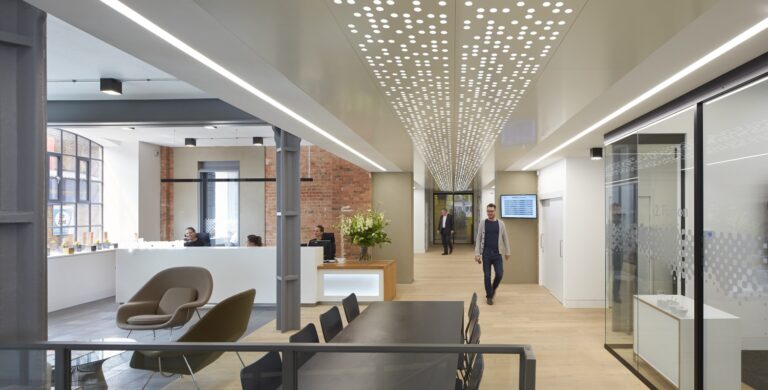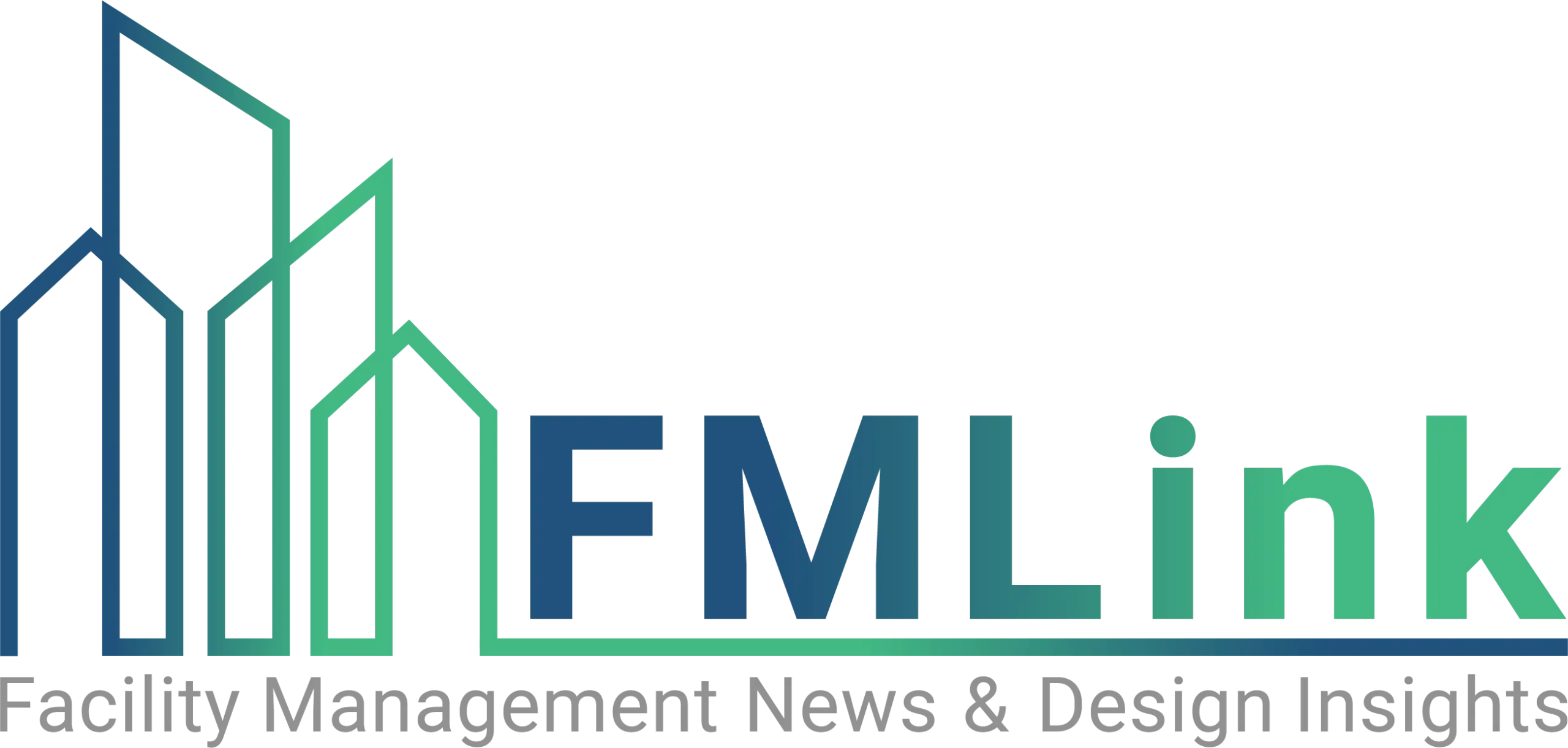Much has been written about multiple generations in the workplace—the issues managers have managing them and challenges designers have in designing a workplace that serves all three generations’ needs.
Who are these three generations of workers?
Millenials (Gen Y) were born between 1978 and 1998. Some are still in grade school, many are in college and the early millenials are already in the workplace. They were born with Nintendo Game Boys in their hands and cell phones at their ears.
The X generation or gen Xers were born between 1965 and 1977. These are the kids who saw their parents (baby boomers) work long hours for a pension and a private office, only to be tossed aside in one of the many corporate downsizings that have occurred over the last decade or two.

Except for a relatively few traditionalists who are still in the workforce (those born before 1943), the rest of the workforce consists of baby boomers. Born between 1943 and 1964, they are all quickly approaching retirement age. In fact, today in the U.S. one of those boomers turns 50 every seven seconds.
According to an article in the Dec. 28, 2010 “Milwaukee Journal Sentinel,” “Starting in January (of 2011), more than 10,000 baby boomers a day will turn 65, a pattern that will continue for the next 19 years.”
With these changes in the workforce, the workplace changes too—and those changes are already well underway. In fact, they’re accelerating. The workplace as we know it will vanish.
The millenials are coming
Back in the ’50s the German Quickborner team invented the landscape office and not long after, Bob Propst from Herman Miller invented the cubicle. This was a radical change over the former workplace consisting of private offices for the highest ranking officers of the company and communal desks for the common worker. Before Propst died in 2000, according to “Fortune” magazine, he lamented his unwitting contribution to what he called monolithic insanity. If you think about it, even though there have been many advancements in workstation and furniture design, the workplace has not fundamentally changed over the last 50 years. It’s the same mix of private offices and cubicles with a sprinkling of support spaces, mostly conference rooms.
Today organizations are less command-and-control and much flatter. Work is performed differently. We are in the age of knowledge work. Knowledge workers are those charged with creating and evaluating knowledge, thinking creatively, analyzing and solving business problems, planning and strategizing, and helping their companies innovate and grow.
According to author Richard Florida, 40 million workers in the U.S.—more than a third of the workforce—are knowledge workers.
The nature of knowledge work is such that it is conducted in different places within the workplace. According to the furniture manufacturer Steelcase, in a Deep Dive report from August of 2009, knowledge work today can be divided into four modes: focusing or heads-down work, collaboration, learning and socialization. All of these modes of work require different physical settings—private spaces for focused work and individualized training; formal and informal meeting spaces such as conference rooms, teaming spaces and project rooms for collaboration; technology-equipped training rooms for formal group learning; and gathering spaces for informal learning, socialization and cultural transfer.

The new workplace will be one in which people don’t come to an assigned workstation every day because they won’t spend all day in one place. Intel conducted an occupancy study on themselves and found that at any given time during the day, 60 percent of their workstations were empty. According to Steelcase research, most studies concur that the typical workstation stands empty 40 to 60 percent of the time.
Workers will move around depending on what they’re working on and with whom they’re working. According to a 2007 report entitled “Managing Multiple Generations in the Workplace” by furniture manufacturer Allsteel, workers will be able to move to spaces that reflect the nature of the work that needs to be done. They may start their days in a small touchdown space, log on to their PC, check their messages and calendar, do a few preparatory activities and then off they go to a conference room for a scheduled meeting, to the cyber caf for coffee with a colleague to informally discuss a business issue or—maybe because their meetings don’t start until mid-morning—to the on-site fitness center to get in their daily workout, knowing that after their meetings end at 5 p.m., they’ll be in the office late tying up the loose ends of the day.
On the other hand, they may not even come to the office in the morning, choosing instead to work from the local coffee shop or even their kitchen table.
Does it make sense to provide assigned spaces to employees if on any given day, not all of them will even be in the office?
According to Patty Berquist, applied research manager at Herman Miller, millenials believe that their employers should encourage active engagement for the benefit of the whole as well as the individual. Millenials tend to work in groups and are more interested in getting together with people as needed in any space available than they are in reserving a specific conference room and putting in a request for audio/visual equipment and beverage service for a scheduled meeting.
They are more likely to organize impromptu meetings in any available place that allows for a few people to gather with ample outlets to plug in their laptops and wireless connectivity to access the Internet. They don’t need a projector as long as the space allows them to see each other’s laptop screens. And they’ll stop at the caf on their way to their informal gathering for their energy drink. Or maybe the caf will be their meeting place.
Does it make sense to provide a workstation for every worker when they’ll move from space to space all day long?
Millenials aren’t interested in rewards like private offices and wood furniture. They are most interested in flexible work schedules and the freedom to do their work in any location they choose without boundaries—as long as they have the latest technology and can perform at their most productive levels in a space that reflects their values. Customized workstations that serve as a home-away-from-home filled with personalized items will go away. If a worker has a heads-down project that they need to spend the day on, they will reserve an enclave or huddle-room or choose to work from home. There will simply be no personalized, assigned workstations.
Does it make sense to provide personal workstations that need to be reconfigured every time someone moves? If there are no permanently assigned workstations for people’s possessions, then moves aren’t required—they can work from anywhere.
The retiring baby boomers
According to the U.S. Bureau of Labor Statistics, in 2008 there were slightly more than 154 million civilian workers in the United States and close to 28 million of them were 55 years of age or older. By 2018 that number will climb to 40 million. At the same time, workers between the ages of 25 and 54 numbered 104 million in 2008 but are expected to grow to only 105 million in 2018.

It’s not just that more and more baby boomers are nearing retirement age and being replaced by younger workers. In fact, many baby boomers will stay in the workforce past the historical retirement age. According to a PEW Research Center report, 52 percent of workers 50 to 64 years old plan to defer their retirement for a number of reasons—choosing to continue to work because they want to; their retirement nest egg has dwindled in the economic downturn; and companies are incenting them to stay in the workforce longer because they need capable, experienced workers and they don’t want to lose the tribal knowledge that older workers retain.
One of the perks that companies are using to incent older workers to stick around is flexible work schedules. But that comes with a tradeoff for older workers. Companies cannot afford to continue to house part-time semi-retired boomers in their traditional four-walled offices that they have earned over the years.
So with the perk of a flexible work schedule that allows older workers to continue to work and still enjoy their part-time retirement, come smaller offices (if not cubicles) when they’re in the office. And because they aren’t all in the office at the same time, they likely will not have assigned workstations. Some might say that baby boomers who are accustomed to the perks of an assigned private office won’t accept that. But more and more, boomers are adapting to many of the younger generation’s behaviors.
As an example, they are using iPhones, iPads and other smart devices. They’re texting. They listen to iPods. They’re reading Kindle books. From what we see boomers adapting to, it would appear that a downgrade to a cubicle will be acceptable to them as long as it occurs in conjunction with a flexible work schedule.
What should we make of this?
The simple, unavoidable fact is that the workplace will change. No longer will we see the traditional mix of assigned private offices and cubicles. The workplace will be filled with alternative spaces. This is how the new generation of workers works and the rest of the workforce, the gen Xers and baby boomers, will have to adapt to it.
Does that mean that gen Xers and baby boomers will be treated as second-class citizens in the workplace? Certainly not. But for companies to be able to compete in the global marketplace where the work being done is increasingly knowledge work, they will need to attract the best of the new generation of employees.
One of the key strategies to incent these talented young workers is to provide a new kind of workplace consisting of multiple types of spaces they can float to as their work demands. The physical workplace may not be the number one attractor for these new workers, but at the end of the day with three equal job offers in hand, a physical workplace that allows them to work the way they need to in a corporate culture that allows flexible work schedules just may be the tipping point.
The workforce is changing and companies cannot remain static in how they support their employees. What worked yesterday will not work tomorrow. Attracting and retaining the best and most talented employees will become more difficult in the future. The stable of available employees will be thin and companies will need to pull out all stops to demonstrate they are an employer of choice.
Of course this goes beyond providing a well-designed workplace that supports the work and the work attitudes of the new workforce. Things such as benefits, corporate social responsibility and culture certainly come into play and in many cases trump the workplace.
But as the furniture manufacturer Herman Miller points out, “As a strategic tool, the workplace is a vehicle that enables individuals and groups, supports processes and tools, and reflects the organization and its brand.”
The millenials are coming and we all need to adapt to their needs. FMJ

Mark R. Sekula, CFM, LEED AP, is president of Facility Futures, Inc., a facility management consulting firm. With 34 years of facility management experience, he has served as a facility management practitioner in the manufacturing, health care and technology industries.
For the past 13 years as a facility management consultant, Sekula has provided strategic guidance, expertise and project management to clients with their real estate assets, physical workplaces and facility management organizations.




